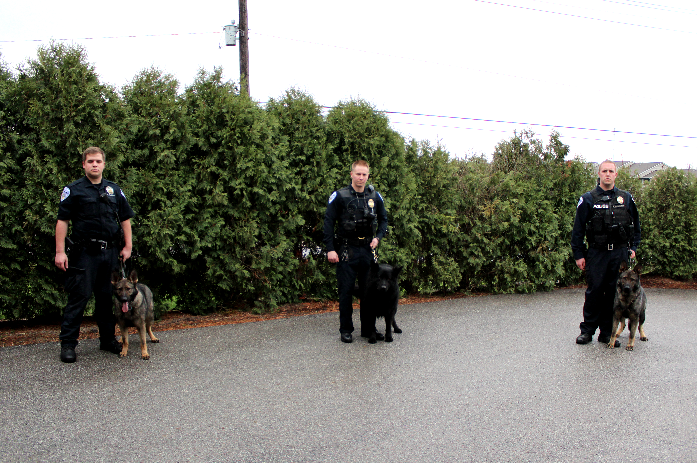Avon Police Department K9 Unit Helps Keep the Community Safe
Writer / Christy Heitger-Ewing
Photographer / Darren Boston
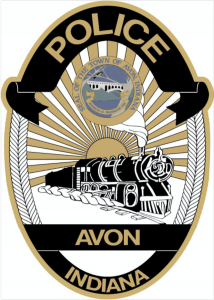 Sgt. Tom Owens had been with the Avon Police Department (APD) for three years when he applied to become a K9 handler in 2008. The APD uses both “single” and “dual” purpose dogs. As the name implies, dual-purpose canines serve two functions: patrol and drug. Patrol dogs track people, search buildings, & aid in apprehensions. Drug dogs search for narcotics. Single purpose dogs only focus on one thing — usually to find drugs and sometimes bombs.
Sgt. Tom Owens had been with the Avon Police Department (APD) for three years when he applied to become a K9 handler in 2008. The APD uses both “single” and “dual” purpose dogs. As the name implies, dual-purpose canines serve two functions: patrol and drug. Patrol dogs track people, search buildings, & aid in apprehensions. Drug dogs search for narcotics. Single purpose dogs only focus on one thing — usually to find drugs and sometimes bombs.
The department’s first dog was Brent, a single purpose drug dog, handled by Sgt. Jeff Lewis from 2003-2008. Owens, who became supervisor of APD’s K9 unit in 2010, handled Hunter until he retired in 2016. Now Owens handles 4-year-old Nero, a dual purpose patrol/drug dog. Thanks to grant money from the Ben Roethlisberger Foundation, in the past year the department has acquired two additional dogs whose main purpose is to help curb the town’s heroin problem. Handler Steve Kasprzyk works with a one and a half-year-old single purpose canine named Indo and handler Eric Hollingsworth works with a 2-year-old dual purpose dog named Lance. All are German Shepherds, a breed that has historically been used as a police or military dog.
When Owens first began working with the K9 unit he wasn’t sure how he would like it. Now, a decade later, he can’t imagine not having a canine by his side. For starters, dogs can check an area 10 times faster than humans, so if officers have a search warrant for a whole house or building, a dog can quickly narrow the search.
“If a dog points us to a certain room, we don’t have to tear apart the whole house,” Owens says. “It really saves time.”
In addition, they can expedite search situations. For instance, should someone refuse police access to search a premise but a dog smells drugs, that provides probable cause for officers to conduct a search.
When criminals flee on foot, dogs come in handy as criminals often conceal themselves in woods, fields or other tricky spots. Scents lead the way much faster than eyeballs and flashlights.
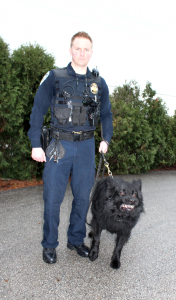 Officers also use canines to search school lockers, classrooms and vehicles.
Officers also use canines to search school lockers, classrooms and vehicles.
“These searches not only catch kids with stuff but also serves as a deterrent when students see the police presence on campus,” Owens adds.
Officers sometimes use dogs during traffic stops if they want to search a car and the driver won’t allow it.
“The dog will run around it and we’ll immediately know if there are drugs in the vehicle,” says Owens, who was called to assist with a traffic stop on the interstate. Owens ran Nero around the car and he hit on drugs. Officers then searched the vehicle and found 20 pounds of marijuana.
Operating a K9 unit doesn’t come cheap. The typical purchase price of a dog runs between $7,000 to $10,000. A kennel is an additional $3,000. General equipment such as leashes, harnesses and bowls is another $1,000, vet costs are roughly $500 a year, and food is $500 to $1,000 annually. The APD does their own training, which saves $5,000. But to ensure a dog’s safety, alarms are installed in squad cars to prevent overheating. If the temperature climbs to a certain point inside the vehicle, windows will roll down and the horn will start to honk. So, in total, to get a dog up and running is between $10,000 and $15,000.
For narcotics school, canines typically go through 3-4 weeks of training. They start by “imprinting” on them the narcotics they want them to find. In Avon, that includes marijuana, meth amphetamines, heroin, ecstasy and cocaine. Handlers teach the dogs to search luggage, vehicles, buildings or lockers. From there, the canines get to where they can search any situation.
“It’s all about learning to follow their nose,” Owens says.
For the patrol side, it takes 4-6 weeks of training with dog training experts in Kansas City. The main focus is on human odor and teaching the dogs to stay on track. To train them for that, they run cross-track.
“That basically means that we have a scent we want them to follow so we’ll have other people cross the track and teach the dogs to stay on the original scent,” Owens says. “We don’t want them veering off onto another one.”
To become a K9 handler, officers endure an application and interview process to determine if it’s a good fit. Ensuring a good fit is crucial because being paired with a dog 24/7 is a huge commitment.
“At the end of a work day, I can’t just go home, take off the uniform and release all responsibility,” Owens says.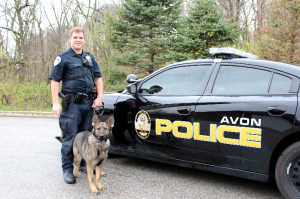
Handlers are responsible for their dog’s care, including vet appointments, medications, flea & tick prevention using NexGaurd and annual shots. Plus, caring for a high-drive dog can be exhausting.
“Energy-wise, these dogs are off the hook,” Owens says. “They want to be on the go round the clock.”
It’s the type of dog behavior that serves them well on the job, however, because when these dogs are hunting for a perpetrator, they do not slow down.
“When they’re following their noses, we’re flapping like a flag in the wind behind them as they drag us along,” Owens says. “But that’s exactly what we want them to do.”
To keep dogs in both physical and mental shape, all 15 dogs in Hendricks County and their handlers are required to participate in obedience, search and tracking drills (completing at least 16 hours of training a month).
“We meet together as a county twice a month to train with everyone,” Owens says.
This is when they put guys in bite suits and practice bite decoy drills. Or they lay tracks so the dogs can smell other people, which is good practice. They also do dope training.
Given the nature of the strenuous job, the dogs can get hurt and sick.
“They have to go where the bad guy went and oftentimes that’s dangerous,” Owens adds. “They could get stuck on a fence. They could encounter a skunk, opossum or raccoon. They could wander into something poisonous. This isn’t the Paw Park or some other controlled environment. They’re constantly being exposed to hazardous situations.”
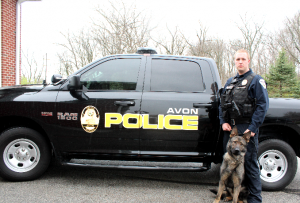 A dog’s longevity on the force is dependent on his personality, his drive but mostly his health. The average age of a K9 officer is eight years old, though Owens’ first dog Hunter worked until he was 11. Others have been forced to retire after a handful of years. Once a dog retires, he’s signed over to his handler. At that point, the handler would normally be responsible for the dog’s medical bills. But APD covers all medical expenses for its retired canines.
A dog’s longevity on the force is dependent on his personality, his drive but mostly his health. The average age of a K9 officer is eight years old, though Owens’ first dog Hunter worked until he was 11. Others have been forced to retire after a handful of years. Once a dog retires, he’s signed over to his handler. At that point, the handler would normally be responsible for the dog’s medical bills. But APD covers all medical expenses for its retired canines.
One of Owens’ favorite memories involves his retired dog Hunter. He was fresh out of patrol school when Hunter tracked a perpetrator to the rail yard and nabbed him in the woods. Later that night, Owens got a call about someone breaking into cars in an assisted living facility off of Dan Jones. Hunter scented the guy from 150 yards away, hiding in a soybean field.
“To get two finds in one night — I was on Cloud Nine!” says Owens, who has dreamed of becoming a police officer ever since he was a little boy growing up on the west side of Indy.
“The captain of the Plainfield PD lived across the street from me and I thought he had the coolest job on the planet,” Owens says.
Though he considered pursuing a career as a mechanic, aptitude tests showed that he was a good fit for law enforcement.
“Now I’ve got the best job in the world,” he says.
And the fact that he gets a four-legged partner makes life even sweeter.
To make a donation to the APD K9 services, visit the Avon Public Safety Foundation link on the police department website or contact Sgt. Owens at towens@avongov.org.


